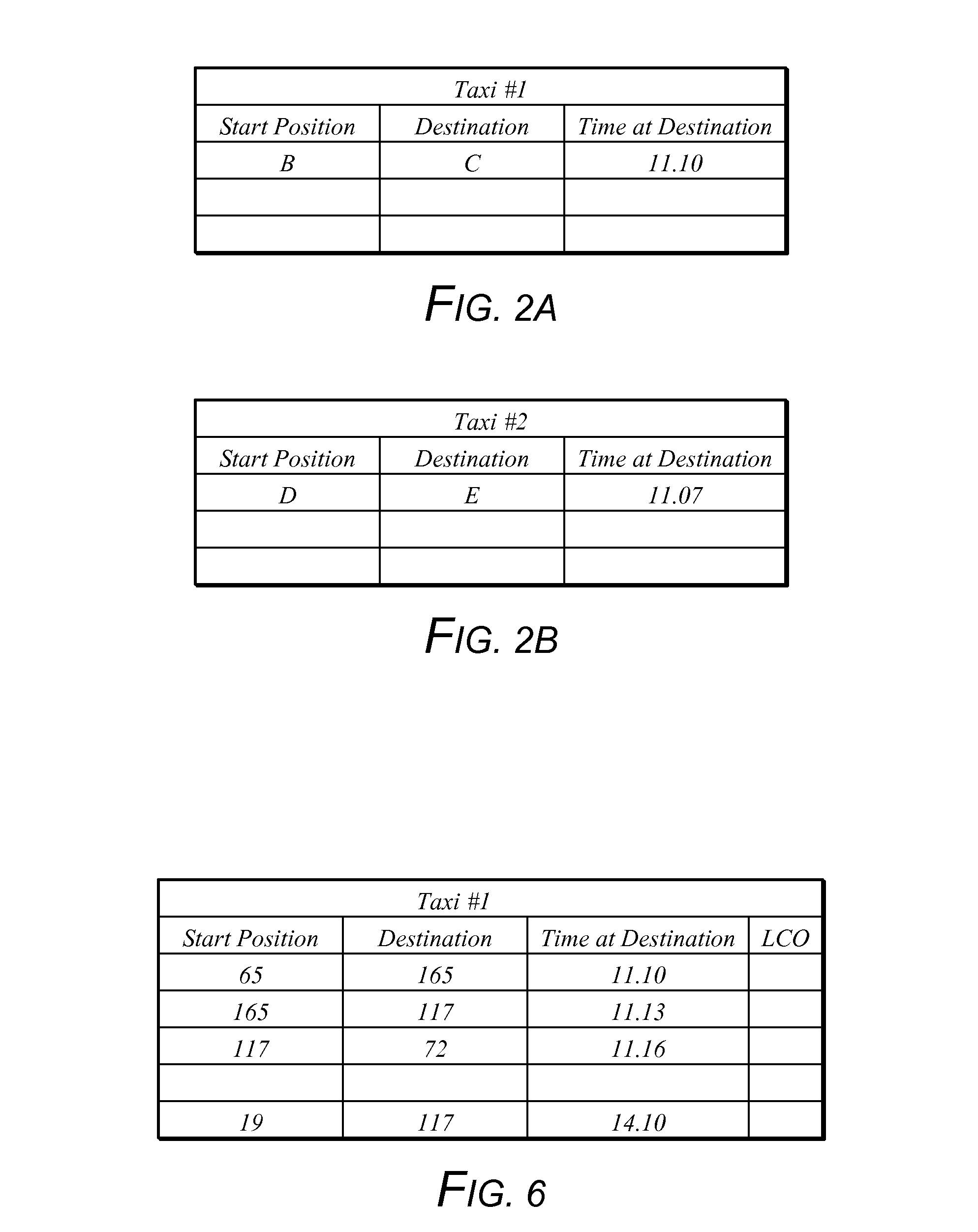Allocation of location-based orders to mobile agents
a technology for mobile agents and location-based orders, applied in data processing applications, instruments, computing, etc., can solve the problem of reducing the detailed local knowledge normally required for dispatching positions, and achieve the effect of improving customer service levels and reducing detailed local knowledg
- Summary
- Abstract
- Description
- Claims
- Application Information
AI Technical Summary
Benefits of technology
Problems solved by technology
Method used
Image
Examples
Embodiment Construction
[0080]The invention can be implemented by, for example, a taxi ordering service dividing its area of operation into a grid, shown in FIG. 1, of adjoining hexagons forming a “honeycomb” pattern.
[0081]For the purposes of illustration assume that two cars are active in the grid at the time an order is taken. A caller to the taxi ordering service is located at point A. When the caller at A requests a taxi, a first taxi (referred to below as taxi No. 1) is at point B, on a journey to point C. A second taxi (taxi No. 2) at this point in time is at point D, on a journey to point E.
[0082]For the purposes of simplicity it is assumed the taxis can travel in any one of six directions along the grid. Each cell is adjoined by six nearest neighbours. The lines joining the centre of any cell and the respective centre of each of its nearest neighbours define the six permitted directions of travel.
[0083]Thus, taxi No. 1 travelling from B to C changes direction at point F (though it could travel via ...
PUM
 Login to View More
Login to View More Abstract
Description
Claims
Application Information
 Login to View More
Login to View More - R&D
- Intellectual Property
- Life Sciences
- Materials
- Tech Scout
- Unparalleled Data Quality
- Higher Quality Content
- 60% Fewer Hallucinations
Browse by: Latest US Patents, China's latest patents, Technical Efficacy Thesaurus, Application Domain, Technology Topic, Popular Technical Reports.
© 2025 PatSnap. All rights reserved.Legal|Privacy policy|Modern Slavery Act Transparency Statement|Sitemap|About US| Contact US: help@patsnap.com



